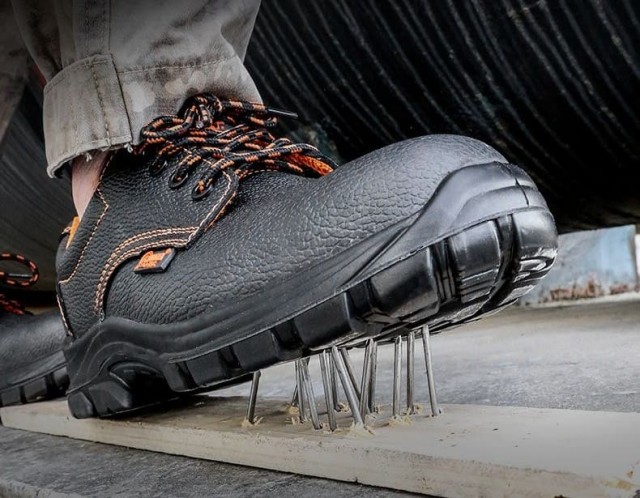When workplace hazards loom, the right protective footwear does more than meet compliance checkboxes—it becomes a daily ally against injury. This guide deciphers how ASTM-compliant toe materials align with real-world occupational needs, from heavy-impact construction sites to electrically charged environments.
How Boots Meet ASTM Protective Toe Standards
Anatomy of a Safety Toe Cap
Every ASTM-rated toe cap is engineered as a protective shell, strategically positioned to deflect or absorb forces before they reach the wearer’s foot. Research shows that over 60% of workplace foot injuries occur when workers wear non-compliant footwear, underscoring the critical role of certified designs.
Decoding ASTM F2413 Testing Protocols
The ASTM F2413 standard mandates rigorous testing:
- Impact Resistance: Toe caps must maintain a minimum clearance (approximately 0.5 inches for men) after enduring a 75 ft-lb force—equivalent to a 20-pound weight dropped from 3.75 feet.
- Compression Resistance: Caps must withstand 2,500 pounds of pressure without collapsing below the same clearance threshold.
These protocols ensure boots can handle sudden drops or rolling objects, common in industries like logistics and manufacturing.
Material Breakdown: From Steel to Carbon Fiber
Weight vs. Protection: The Steel vs. Composite Debate
- Steel Toes: Offer unmatched durability for high-impact scenarios (e.g., construction), but their weight (about 30% heavier than composites) can cause fatigue during long shifts.
- Composite Toes: Made from materials like Kevlar or fiberglass, they meet ASTM standards while being lighter and non-conductive—ideal for electrical work or cold environments where metal could transfer extreme temperatures.
Niche Solutions: Alloy and Carbon Fiber Applications
- Alloy Toes: Blend lightweight aluminum with steel’s strength, suitable for workers needing mobility without sacrificing protection.
- Carbon Fiber: The premium choice for extreme environments. Its nano-engineered structure provides strength comparable to steel at half the weight, plus resistance to corrosion and temperature fluctuations.
Choosing the Right Toe for Your Worksite
Industry-Specific Recommendations
- Construction/Manufacturing: Prioritize steel or alloy toes for durability against heavy machinery and falling debris.
- Electrical Work: Composite or carbon fiber toes prevent conductivity risks.
- Logistics/Warehousing: Lightweight composites reduce fatigue during 10+ hours of movement.
Maintenance Tips to Preserve ASTM Compliance
- Inspect toe caps monthly for cracks or deformities.
- Replace boots if the interior clearance diminishes—a sign the cap may no longer meet ASTM impact/compression thresholds.
- Avoid modifying boots (e.g., drilling holes), which can compromise structural integrity.
Ready to Equip Your Team with Optimized Safety Footwear?
3515 partners with distributors and bulk buyers to deliver ASTM-compliant boots tailored to your industry’s risks and comfort needs. From steel-toe durability to carbon fiber innovation, our range combines certified protection with ergonomic design—because safety shouldn’t come at the cost of comfort. [Contact 3515] to discuss your procurement needs today.
Related Products
- Wholesale Customizable Suede Safety Boots - Puncture-Proof with Velcro Closure
- Customizable Anti-Smash Safety Boots for Wholesale & Private Label Manufacturing
- Athletic Safety Shoes with Dial Closure & Steel Toe for Wholesale & Custom Manufacturing
- Wholesale Mesh Steel Toe Safety Shoes with Dial Closure Factory Production
- Factory-Direct Wholesale Canvas Boots with High-Traction Rubber Soles
Related Articles
- How to Choose Work Boots That Match Your Industry's Safety Needs
- How to Choose Work Boots That Match Your Job's Safety Demands
- How to Choose Work Boot Materials for Maximum Safety and Durability
- Matching Men’s Work Shoe Safety Technologies to Workplace Hazards
- Steel Toe Work Boots: Balancing Safety and Comfort for Demanding Jobs



















